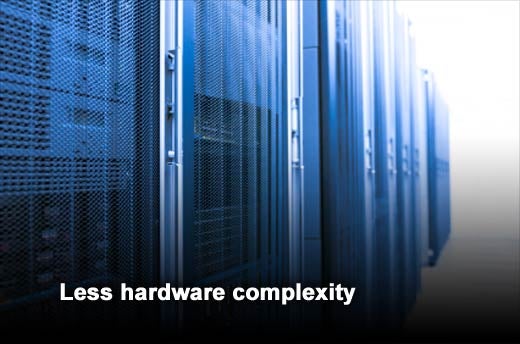As cloud computing makes its way to the top of CIOs’ priority lists, Logicalis US, an international IT solutions and managed services provider, says a well-implemented virtualization plan can be the key to success. Virtualization can lead to a truly converged infrastructure that is more efficient, adaptable to changing business requirements, and easier to maintain and support. Unfortunately, a surprising number of enterprise IT departments don’t have a plan in place that clearly defines the goal for their virtualized IT environment or any next steps beyond virtualization. To help, Logicalis US has created a blueprint for IT transformation, a step-by-step guide to assist IT pros in determining where they are as well as where they’re headed.
Often described as a journey in itself, virtualization has taken IT to new heights from which whole new sets of opportunities come into view. Simply put, IT pros can do things they couldn’t before – centralized control of a distributed environment, for example. Levels of disaster recovery that would have been prohibitively expensive become affordable with virtualization. Run-of-the-mill Windows machines and the services they provide now inherit high availability and fault tolerance by being part of a virtualized framework.
Click through for eight answers to the question “Why Virtualize?” as identified by Logicalis.
Virtualization offers dramatic savings from server and storage consolidation; it’s a compelling technology that allows technology pros to do the same things better, faster and cheaper, resulting in improvements in performance and management, as well as savings in money and energy.
Virtualization makes it possible to reduce the number of physical servers needed by an average of 15-to-1 and ensures that all servers are running at appropriate load levels.
Systems that would have taken months to deploy in the physical world can be deployed in weeks in a virtualized environment.
The relative ease and affordability virtualization offers when implementing improved disaster recovery (DR) strategies with better recovery times is of particular appeal to IT directors who have been leaving the office every day for years with their fingers crossed, worrying about how long their companies would be down in the event of an emergency.
When the hardware layer is separated and abstracted with virtualization, IT won’t need to deal with all of the details of specific device drivers for one machine or another, or patching from one vendor to another. The hardware layer becomes much further removed and a less significant part of the overall management strategy.
Physical servers, by virtue of becoming virtual servers, inherit the high availability with failover redundancy that the virtualization layer provides in a virtualized environment.
With virtualization tools like VMware, which made it possible to consolidate the very Wintel platform that opened the Pandora’s box to rapid IT decentralization in the first place, there is no element of the IT environment – including servers, storage, desktop and networks – that cannot be reconfigured in a more effective and efficient form.
The level of centralized control that virtualization makes possible takes systems management to an entirely new level. Today’s IT pros are implementing dynamic data center environments consisting of pools of high-performing computing resources that can be centrally managed, readily automated and efficiently maintained. Security and compliance are built in instead of bolted on, and the upgrade path is evolutionary instead of disruptive.











